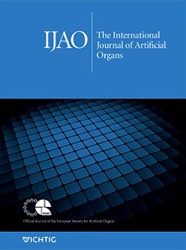Cells isolated from diseased explanted livers

Livers discarded after standard organ retrieval are commonly used as a cell source for hepatocyte transplantation. Due to the scarcity of organ donors, this leads to a shortage of suitable cells for transplantation. Here, the isolation of liver cells from diseased livers removed during liver transplantation is studied and compared to the isolation of cells from liver specimens obtained during partial liver resection. Hepatocytes from 20 diseased explanted livers (Ex-group) were isolated, cultured and stored at 4°C for up to 48 hours, and compared to hepatocytes isolated from the normal liver tissue of 14 liver lobe resections (Rx-group). The nonparenchymal cell fraction (NPC) was analyzed by flow cytometry to identify potential liver progenitor cells, and OptiPrep™ (Sigma-Aldrich) density gradient centrifugation was used to enrich the progenitor cells for immediate transplantation. There were no differences in viability, cell integrity and metabolic activity in cell culture and survival after cold storage when comparing the hepatocytes from the Rx-group and the Ex-group. In some cases, the latter group showed tendencies of increased resistance to isolation and storage procedures. The NPC of the Ex-group livers contained considerably more EpCAM+ and significantly more CD90+ cells than the Rx-group. Progenitor cell enrichment was not sufficient for clinical application. Hepatocytes isolated from diseased explanted livers showed the essential characteristics of being adequate for cell transplantation. Increased numbers of liver progenitor cells can be isolated from diseased explanted livers. These results support the feasibility of using diseased explanted livers as a cell source for liver cell transplantation.
